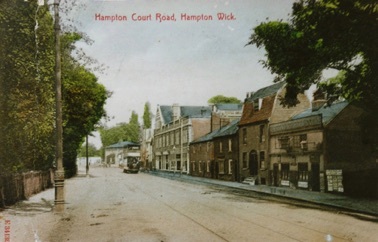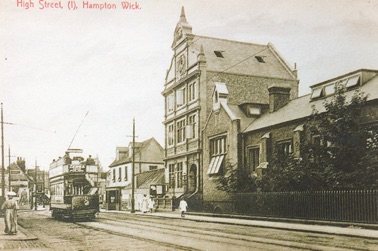Trams
Trams arrived in Hampton Wick with routes running from Twickenham starting in 1903 and across Kingston Bridge in 1906. The need to alleviate sharp bends and widen the roads led to much demolition but also improved road surfaces with wood (and sometimes stone) blocks.
(Click to get a larger image)

Trams ran from 1903 on a circular route from Twickenham via Teddington and Hampton Court. The White Hart was a major stop on the route.






